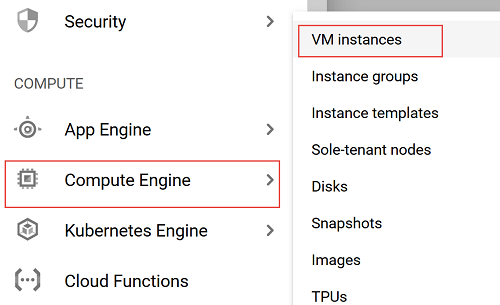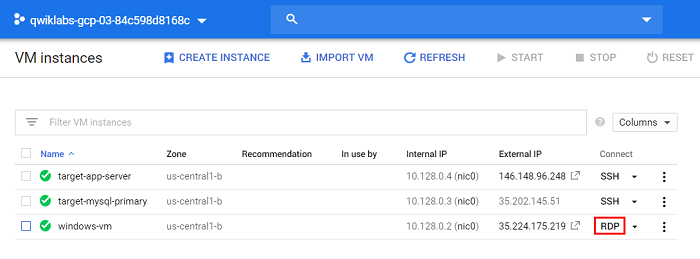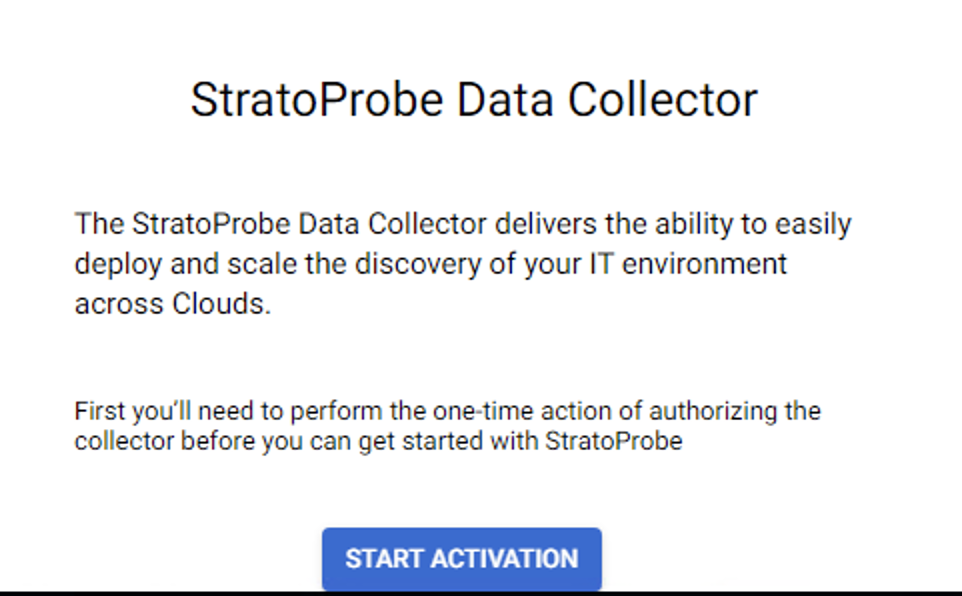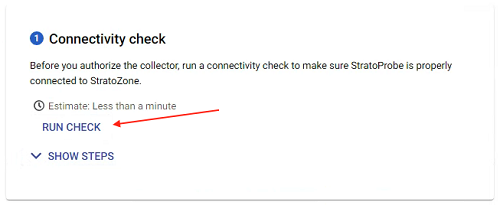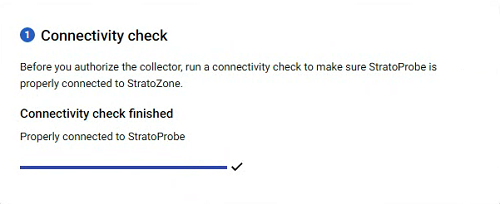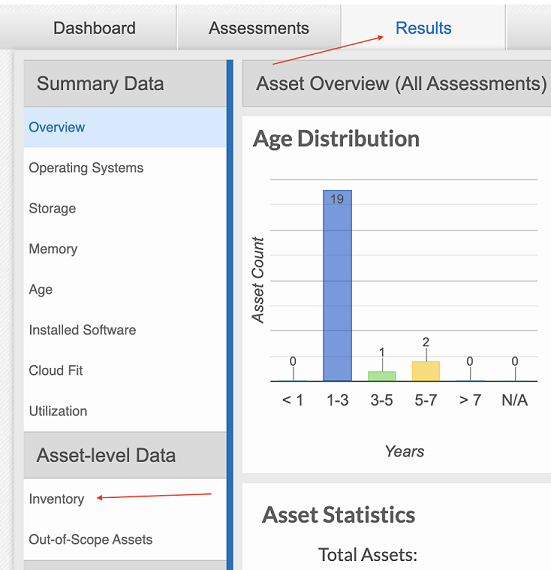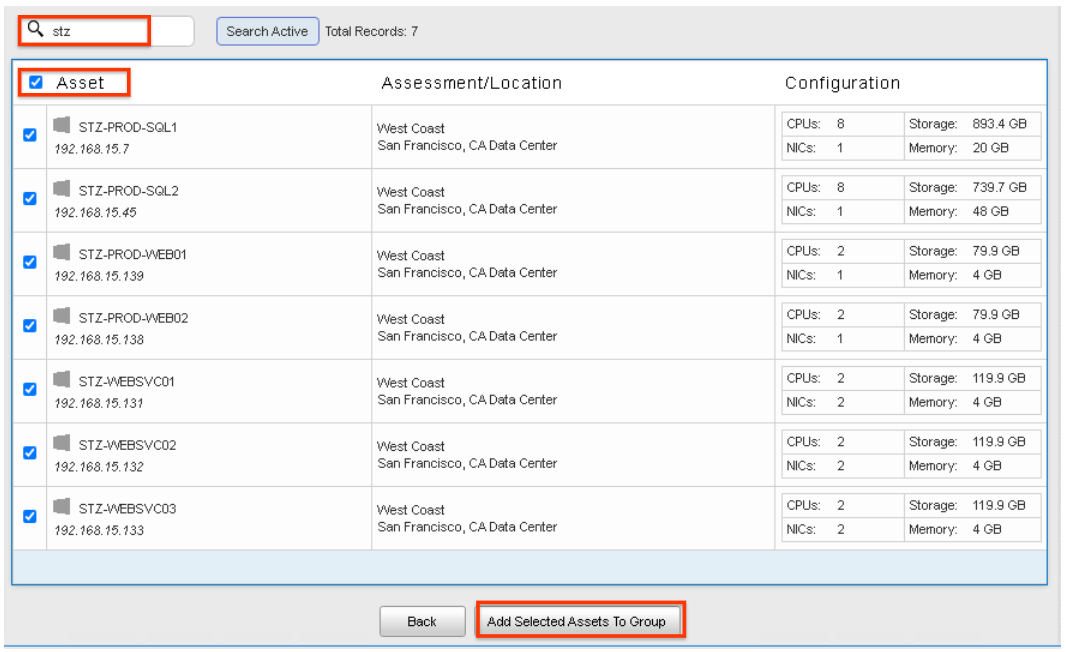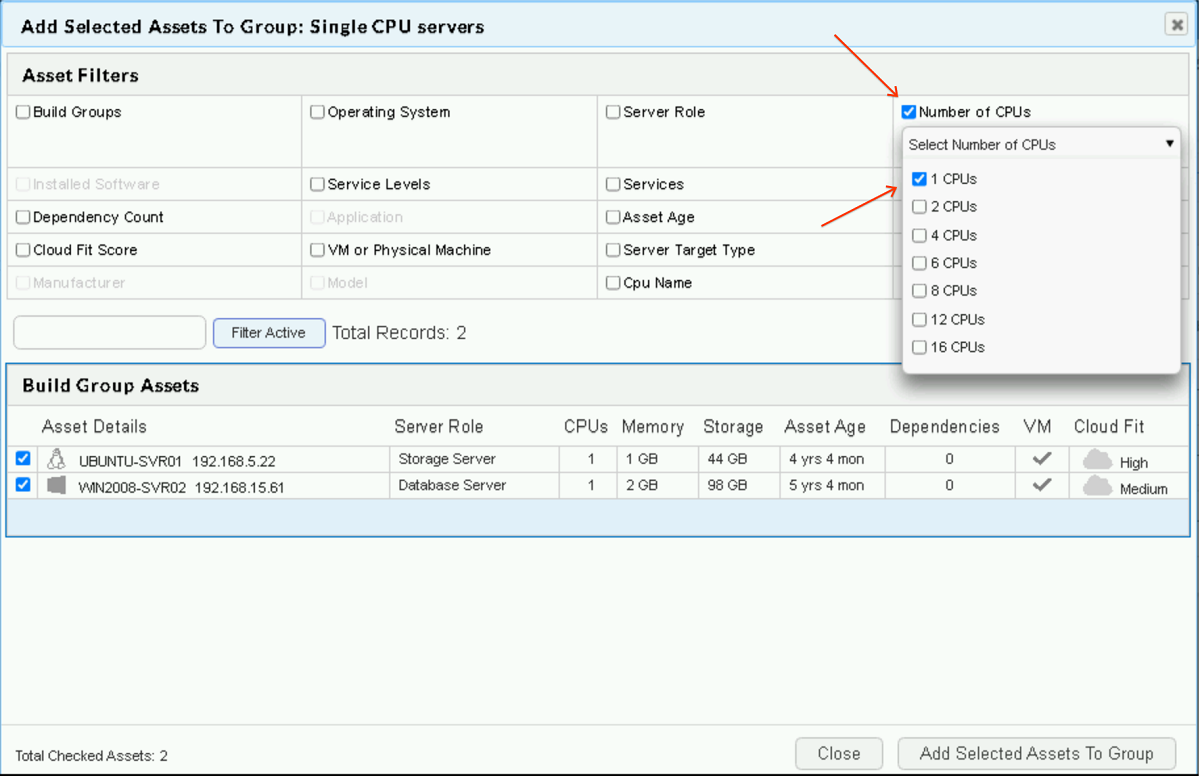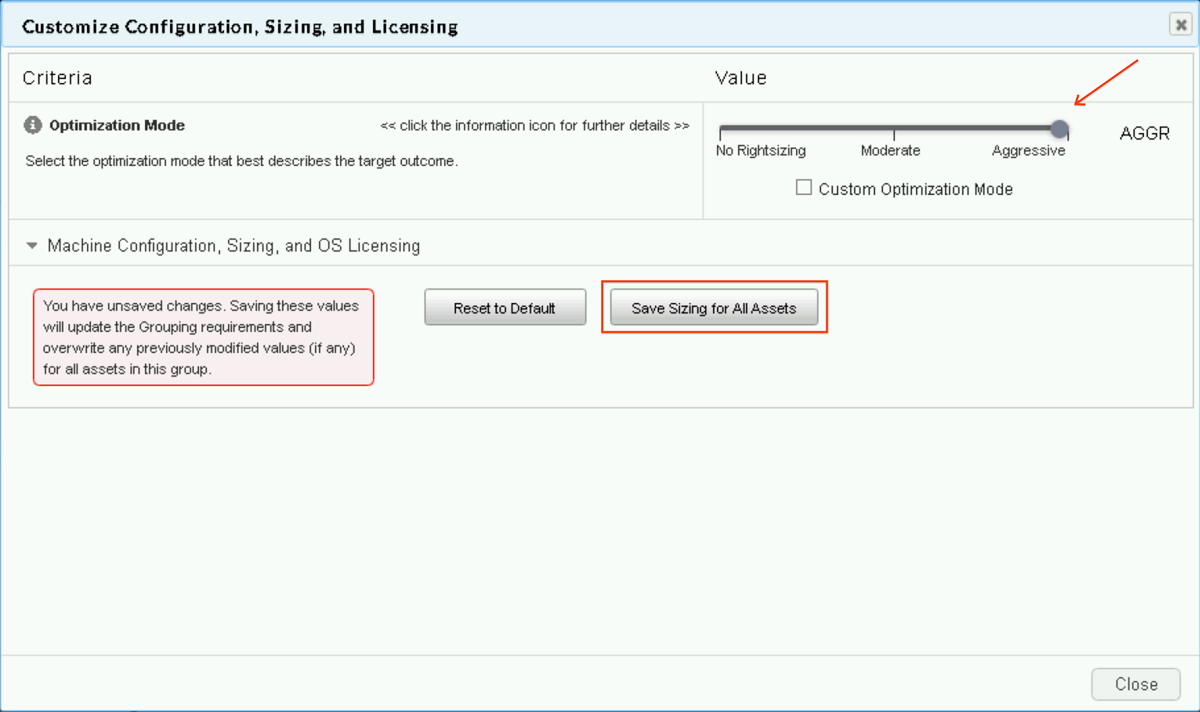Checkpoints
Verify that the Automated Assessment has been created
/ 10
Verify that the Collector is activated and the IP scanner is properly configured
/ 10
Start New Assessment (Manual) and Establish a collector
/ 10
Verify Assets were Loaded (Inventory Check)
/ 10
Verify that the StratoZone Reports have been generated
/ 10
Verify that that Groups were created
/ 10
Verify that the Optimization Mode was set to Aggressive
/ 10
Verify that the second set of reports were generated
/ 10
Verify Data is Being Received
/ 20
VM Migration: Introduction to StratoZone Assessments
- GSP686
- Overview
- Setup
- Task 1. Log in to the StratoZone portal
- Task 2. Start new assessment (automatic)
- Task 3. Deploy StratoProbe data collector
- Task 4. Start new assessment (manual)
- Task 5. Generate initial reports
- Task 6. Create groups
- Task 7. Optimize assets
- Task 8. Generate final reports
- Task 9. Verify data is being received
- Congratulations!
- Next steps / learn more
GSP686
Overview
The StratoZone® SaaS platform provides customers with a data-driven cloud decision framework. The StratoProbe® Data Collector Application delivers the ability to easily deploy and scale the discovery of a customer's IT environment for Private, Public, or Hybrid-cloud planning. To ease and accelerate the VM migration journey, Google Cloud offers assistance and guidance in making the right decisions when deciding to go to cloud.
In this hands-on lab you'll learn how to assess a customer's current environment with StratoZone's scalable discovery. You'll generate inventory, cloud fit score, and financial reports including TCO and ROI analysis.
What you'll do
- Create a new assessment
- Deploy a collector and start a scan of the deployed environment
- Group assets based on defined criteria
- Review collected data and run reports
Setup
Before you click the Start Lab button
Read these instructions. Labs are timed and you cannot pause them. The timer, which starts when you click Start Lab, shows how long Google Cloud resources will be made available to you.
This hands-on lab lets you do the lab activities yourself in a real cloud environment, not in a simulation or demo environment. It does so by giving you new, temporary credentials that you use to sign in and access Google Cloud for the duration of the lab.
To complete this lab, you need:
- Access to a standard internet browser (Chrome browser recommended).
- Time to complete the lab---remember, once you start, you cannot pause a lab.
How to start your lab and sign in to the Google Cloud console
-
Click the Start Lab button. If you need to pay for the lab, a pop-up opens for you to select your payment method. On the left is the Lab Details panel with the following:
- The Open Google Cloud console button
- Time remaining
- The temporary credentials that you must use for this lab
- Other information, if needed, to step through this lab
-
Click Open Google Cloud console (or right-click and select Open Link in Incognito Window if you are running the Chrome browser).
The lab spins up resources, and then opens another tab that shows the Sign in page.
Tip: Arrange the tabs in separate windows, side-by-side.
Note: If you see the Choose an account dialog, click Use Another Account. -
If necessary, copy the Username below and paste it into the Sign in dialog.
{{{user_0.username | "Username"}}} You can also find the Username in the Lab Details panel.
-
Click Next.
-
Copy the Password below and paste it into the Welcome dialog.
{{{user_0.password | "Password"}}} You can also find the Password in the Lab Details panel.
-
Click Next.
Important: You must use the credentials the lab provides you. Do not use your Google Cloud account credentials. Note: Using your own Google Cloud account for this lab may incur extra charges. -
Click through the subsequent pages:
- Accept the terms and conditions.
- Do not add recovery options or two-factor authentication (because this is a temporary account).
- Do not sign up for free trials.
After a few moments, the Google Cloud console opens in this tab.

To begin, you will download and deploy the collector in a simulated customer environment created for this purpose in Google Cloud.
- In the Console, from the Navigation menu, select Compute Engine > VM instances.
-
If prompted, select the Google Cloud project assigned to your lab.
-
Click the RDP button next to the windows-vm instance.
- Use the following credentials to complete the RDP login:
|
User name |
stratozone |
|
Password |
$tr@t0z0n3 |
Task 1. Log in to the StratoZone portal
In this section, you will log in to the StratoZone portal.
-
Minimize the Server Manager Dashboard if it's too big.
-
From the windows-vm desktop, click on the Google Chrome icon, then open Stratozone. Use the lab credentials provided to log in to the StratoZone lab session.
-
Agree to the terms and conditions and click Next.
Once logged in you will be able to access the assessments and review collected data.
Task 2. Start new assessment (automatic)
Next, collect live data from a set of machines running in the Google Cloud environment. This automatically collected data is how 99% of assessments are conducted in real world customer environments. The main benefit of this approach is that you will receive unbiased information directly from the systems scanned. This natively collected data provides machine inventory, specs, utilization, execution processes, services, software versions installed, and network connectivity. This data enables all of the advanced StratoZone features such as:
- Cloud Fit scores
- Optimization of underutilized workloads
- Network dependency mapping
- Financial business case (TCO/ROI)
- Automated summary reporting and proposal
- To begin the discovery and start the assessment wizard, click the Assessments tab.
- Now, click the Create New Assessment Group button in the top menu.
Establish collector
- On the Create New Assessment page, use the following values for this lab:
|
Assessment Type |
Automatic Asset Discovery |
|
Assessment Group Name |
Lab-Assessment1 |
|
Customer Sponsor Name & Email |
Enter your name and a personal email address Note: Don't use the Connection panel details |
|
Customer Tech Contact Name & Email |
Enter your name and personal email address Note: This email will receive an email with collector installation instructions |
- Click Save.
Once the Assessment has been created, the system will automatically start the data collector configuration wizard.
- On the Details tab use the following values:
|
Assessment / Data Center |
Lab Datacenter |
|
Expected Number of Assets to Collect |
5 |
-
Click Save & Next.
-
Under the Run Schedule tab, leave the default values and click Save & Next.
Under the Data Security tab, note the available options for removing data sent from the data collector to StratoZone.
-
For this lab use the default option Level 1.
-
Click Save & Next.
- Click download
to obtain the installation package.
- Click Generate Access Code
to obtain the Temporary Access Code.
Click Check my progress to verify the objective.
Task 3. Deploy StratoProbe data collector
Once the Assessment has been created in the StratoZone portal, the customer installs the collector and begins the discovery process within their current datacenter (or cloud) infrastructure.
In this section, you will configure the collector to understand what's involved in this process. You should be able to describe the collector's high level requirements and configuration steps such as:
- Line-of-sight connection requirements
- Scanning an IP range
- Connection methods (WMI, SSH)
- Credential requirements
-
Double-Click on the setup.exe file, and click Run.
-
Click Yes when prompted to confirm permitting changes to the system.
-
In the Microsoft Visual C++ setup window, click OK.
-
Accept the License Agreement and click Next.
-
In the Information window, click Next.
-
In the Select Destination Location window, accept the defaults and click Next.
-
In the Select Additional Tasks window, click Next and then click Install.
- While you're waiting, check the email that you used earlier to see an alert from StratoProbe Collector.
No, I will restart the computer later.-
Once the installation is complete click Finish.
-
Click on the Windows Start button and launch StratoProbe.
-
When the StratoProbe Data Collector opens, click Start Activation button.
- Click Run Check link to verify installation completed successfully.
After verification completes and all checks pass collector can be activated.
- Click Continue.
- Enter the Temporary Access Code and click the Authorize button.
HINT: To find the Temporary Access Code again, follow the steps below:
a. Click Assessments tab > Lab-Assessment1 > Edit Data Collector icon.
b. Click the key icon 
Once activation completes, the StratoProbe Data Collector will open.
- Click Add Credentials button in the upper left menu.
Multiple credentials can be stored within StratoProbe to allow the collector to access systems belonging to different Active Directory domains, or having local accounts, or SSH keys.
- Choose OS as the scanning method and click Configure.
- Use the following values to set up a credential group:
|
Credential Name |
Lab |
|
Credential Type |
Username and Password |
|
Username |
stratozone |
|
Password |
$tr@t0z0n3 |
Group Scheduling |
Accept Defaults |
-
Click Add Credential button.
-
From the Add Assets dropdown, select Machine > Scan IP address ranges from Machine sub-menu.
IP address range scan allows for discovery of assets across the network.
- Agree to the Terms & Conditions by checking the box and clicking Continue.
- From the Add IP Address Ranges dropdown select Enter ranges.
-
For the beginning IP address, use the first three octets plus .1 (10.128.0.1 in this example).
-
For the ending IP address, use the first three octets plus .5 (10.128.0.5 in this example).
-
In the
Start IP scanrange popup, click Start Scan button.
- Click on the arrow button to go back to the dashboard.
Click Check my progress to verify the objective.
Task 4. Start new assessment (manual)
In a scenario where a customer does not want to scan their environment, but instead wants to provide a list of assets to achieve high-level pricing estimates, you can conduct the assessment by ingesting external data directly into the StratoZone portal. The data can be sourced from a current CMDB, inventory list, vCenter exports, or any other internal system that provides the minimum required machine specs. This method offers a very quick turnaround for basic pricing, but will not offer the ability to optimize for utilization, understand running software components, or view network relationships.
To begin a manual-load assessment, create a new assessment, as previously outlined for the automatic scan.
- Click on the Assessments tab, then click the Create New Assessment Group button in the top menu.
Establish collector
- Use the following values for this lab and click Save when done:
|
Assessment Type |
Manual Asset Entry |
|
Assessment Group Name |
Lab-Assessment2 |
|
Customer Sponsor Name & Email |
Enter your name and personal email address |
- When prompted, use the following value for manual inventory assessment:
|
Assessment Name |
Lab Datacenter Manual |
|
Upload Type |
Manual |
- Click Save & Next button to go to the Upload tab.
Click Check my progress to verify the objective.
Importing a CSV document is the fastest way to start a manual assessment. In this lab you will use a pre-existing Machine information CSV file. That is the only file required for manual import.
- In the windows-vm, Open Chrome, then go to following URL:
- Download the file.
This is a list of servers that we want to manually import into StratoZone.
- Click the UPLOAD button next to Machine Information.
-
From the popup, click the Choose File button, browse to Downloads and choose the lab_server_list.csv file, then click Open.
-
From the available options, select Use only provided IP addresses specified in import file, then click the Upload button.
File should be imported successfully into the staging area for review.
-
Check the status displayed next to the file. Initially file status will be Uploaded, Processing. Once completed, you will receive notification on the screen.
-
After 2 minutes, if the status does not change click the
refreshbutton.
- Once the status changes to Processed, click Save & Next button to go to the next tab.
Servers should be imported successfully into the staging area for review. If the import was successful there will be a ✓ icon in the status column. If there are problems with a server from the import, there will be an X icon in the status column for the affected row.
- Click the Complete Import button at the bottom of the page.
Once processing completes, the "Complete Import" button will be disabled and notification will popup that manually uploaded assets have been added to inventory.
Verify assets were loaded (inventory check)
- Select the Results tab in the top menu then click on Inventory link in the left menu.
- From Filters menu expand Assessment and click "Lab Datacenter Manual".
The system should display 19 records.
Click Check my progress to verify the objective.
Task 5. Generate initial reports
The delivery of findings is accomplished either interactively by presenting StratoZone portal screens to the customer or by generating reports which can be used for presentation or offline delivery and transmissions. Next you will go through a few critical reports which contain key results of an assessment.
Summary report
The StratoZone® platform continuously analyzes data based on the discovery of assets in this sample customer environment. The findings, analysis, and recommendations are made available to you within your StratoZone® portal and summarized in this report. This report is generated iteratively for customers during various assessment phases to capture various groupings and financial scenarios.
To generate the Summary Report:
-
Click the Reports tab.
-
Click the Generate Report on the
Assessment Summary and Proposaltile. -
When prompted, use the following settings:
|
Report Name |
Initial Summary Report |
|
Report Format |
Google Slides |
|
Select Filters (Build Groups) |
Select All |
|
Vendor Catalog |
Private Data Center |
|
Comparison Vendor |
Google Cloud On-Demand |
|
Comparison Vendor Catalog |
Google Cloud 1 Year Commit |
|
Comparison Vendor Catalog |
Google Cloud 3 Year Commit |
-
Click Create Report. Report will take a few minutes to build.
-
From the
Report Download Queue, click the Google Slides icon to view the report in Google Slides. -
Log in with your lab credentials to view the report.
-
To access generated reports, click on Download Queue.
- Review the report for some of the key deliverables:
- Automatically-generated customer-ready narrative about the nature of the assessment
- What locations were assessed
- Technical findings (Asset counts, CPU/RAM/Storage resource information, etc)
- Cloud readiness (cloud fit score)
- Financial Analysis, Comparison, and Savings (including cost of current brick and mortar datacenter vs potential cloud options)
Click Check my progress to verify the objective.
Inventory report
To generate the inventory report:
- Click the Reports tab.
- Click the Generate Report on the
Inventorytile.
- Once prompted, use the following settings to create the report:
|
Report Name |
Initial Inventory Report |
|
Report Format |
Google Sheets |
|
Select Filters |
Select All |
-
Click Create Report. (Report may take a few minutes to generate)
-
Click on the Google Sheets icon to view the report.
So far, you've initiated an assessment for the customer and generated basic findings. The StratoZone platform processed and organized the data according to collector locations, determined cloud fit scores, and provided quick outputs.
The StratoZone offers additional, advanced functionality to control how the data is presented. Here, you will step through a few exercises such as:
- Grouping of assets
- Optimization of underutilized assets
- Pricing scenarios
Task 6. Create groups
Grouping allows you to present the information in a format that is familiar to the customer's environment. Groups can reflect business units, departments, dev/test/prod environments, applications, etc. Groups can be created and managed directly in the platform.
-
Click on the Grouping tab.
-
From the left menu, click on Build Groups.
- From available actions, click Add New Group button.
Group Name: Production
-
Leave default values for the rest of the options and click the Save button.
-
Click Close on the next screen.
-
From available group actions, click Add Assets to: Production
-
In the search field, type in stz to filter the server names.
-
Check the Asset box on top to select all filtered assets.
-
Click the Add Selected Assets to Group button.
-
Create a second group using the steps above and use the following configuration:
|
Group Name |
Development |
-
When adding assets, enter dev in search criteria.
-
Select all dev assets and click the Add Selected Assets to Group button.
-
Create a third group using the steps above and use the following configuration:
|
Group Name |
Single CPU servers |
- To add assets, click the Search icon for the group.
- From the popup, check the Number of CPUs option and select 1 from the list.
Leave the rest of the values as default.
- Click the Add Selected Assets To Group button.
Click Check my progress to verify the objective.
Task 7. Optimize assets
Optimization of underutilized resources may be the single most impactful action to affect cloud spend projections and savings. Optimization can be applied globally to all assets or by group. In this step, you will use pre-built optimization levels.
- Click on the Sizing tab.
- From the left menu, select Customize Assessments action and click on the Customize For All Assets button.
- Slide the value for Optimization Mode to Aggressive.
- Scroll down to the bottom of the popup and click Save Sizing for All Assets.
- Click the Close button.
Click Check my progress to verify the objective.
Task 8. Generate final reports
Summary report
This time around, the report will be generated differently based on the created groups. It will also display financials based on applied optimization settings. Overall costs and savings will reflect these optimizations.
-
Click the Reports tab.
-
Click the Generate Report on the
Assessment Summary and Proposaltile. -
When prompted, use the following settings:
|
Report Name |
Final Summary Report |
|
Report Format |
Google Slides |
|
Select Filters (Build Groups) |
Select All |
|
Vendor Catalog |
Private Data Center |
|
Comparison Vendor Catalog |
Google Cloud On-Demand |
|
Comparison Vendor |
Google Cloud 1 Year Commit |
|
Comparison Vendor Catalog |
Google Cloud 3 Year Commit |
-
Click Create Report.
-
Click the Google Slides icon to view the report in Google Slides.
- Compare the values to the
Initial Summary Report.
Pricing report
Pricing tab to evaluate any number of configurations or procurement scenarios.
- Click the Reports tab.
- Click the Generate Report on the
Detailed Pricingtile.
The Pricing report provides a detailed breakdown of pricing that was applied to each individually evaluated workload. It gives additional visibility into the choices that are recommended. It also identifies specific VM and storage selections.
- When prompted, use the following settings:
|
Report Name |
StratoMatch Report |
|
Report Format |
Google Sheets |
|
Select Filters (Build Groups) |
Select All |
|
Vendor Catalog 1 |
Private Data Center |
|
Vendor Catalog 2 |
Google Cloud On-Demand |
|
Vendor Catalog 3 |
Google Cloud 1 Year Commit |
|
Vendor Catalog 4 |
Google Cloud 3 Year Commit |
-
Click Create Report button.
-
Click the Google Sheets icon to view the report in Google Sheets.
Click Check my progress to verify the objective.
Task 9. Verify data is being received
In this step, cycle back to check on the progress of the automatic discovery. In the real world, you would validate that the discovery has been correctly stated by the customer in the first few hours or days of the assessment.
- Select the Results tab in the top menu then click on Inventory link in the left menu.
- From Filters menu expand Assessment and click "Lab Datacenter".
The assessment list should show Lab-Assessment1 and number of assets collected.
Click Check my progress to verify the objective.
Congratulations!
You've completed an assessment for a sample customer. You've scanned an environment within Google Cloud in the same way you would discover physical or virtual servers on a customer's network within their datacenter(s). You've also loaded an inventory list of assets to be analyzed without the scan.
You've navigated through some of the key areas of delivery such as forming groups, optimizing around utilization of assets, and generating reports (inventory, TCO/ROI).
While there is significantly more functionality in the StratoZone platform that ultimately feeds into a comprehensive cloud transformation plan, we hope that this quick lab serves as an introduction to approaching customer's transformation goals in a prescriptive, pragmatic, and measurable way and helps you establish a trusted advisory role by quickly providing this valuable information.
Finish your quest
This self-paced lab is part of the VM Migration quest. A quest is a series of related labs that form a learning path. Completing this quest earns you a badge to recognize your achievement. You can make your badge or badges public and link to them in your online resume or social media account. Enroll in a quest or any quest that contains this lab and get immediate completion credit. See the Google Cloud Skills Boost catalog to see all available quests.
Take your next lab
Next steps / learn more
Google Cloud training and certification
...helps you make the most of Google Cloud technologies. Our classes include technical skills and best practices to help you get up to speed quickly and continue your learning journey. We offer fundamental to advanced level training, with on-demand, live, and virtual options to suit your busy schedule. Certifications help you validate and prove your skill and expertise in Google Cloud technologies.
Manual Last Updated January 15, 2024
Lab Last Tested January 15, 2024
Copyright 2024 Google LLC All rights reserved. Google and the Google logo are trademarks of Google LLC. All other company and product names may be trademarks of the respective companies with which they are associated.


